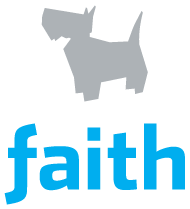What’s Next?

In recent times most of us have been anchored to our computer screens, trying to reach out to our customers and endeavouring to connect in a meaningful way. Established work patterns and relationships have been fractured as we attend countless video meetings on zoom and teams. For those of us in service businesses it’s been a time of reflection as we ponder how we will manage our businesses on our return to a normal economy. What ‘normal’ will be we don’t know, but we understand and expect our worlds to change dramatically.
On the assumption that the lockdowns finish in September and we go back to Stage 3 ,or better, we need to charter a course for the next six to twelve months. The recent round of results for last financial year has already revealed the big winners. Both Coles and Woolworths have enjoyed huge growth in their online businesses, despite the lockdowns, with the latter group just announcing a $550 million investment in PFD foods. Who says people are not making big decisions in 2020?
Bernard Salt in a recent article in ‘The Australian’ analysed the COVID stats in terms of the demographics, the locations of where outbreaks occurred, and the implications for business and the general population. The middle-class suburbs have fared relatively well, but the newer growing suburbs, with a higher preponderance of blue-collar workers, have fared poorly.
May and June retail sales were good, but then the second wave came.
Presumably there is a lot of pent up demand in lockdown. With 24% of the population driving 70% of the spend, we can expect solid activity in the run through to Christmas, as people break away from lock down.
For business generally cash reserves will be vital. Most businesses will have already addressed their cost base during the pandemic and will have slimmed down considerably. The Job Keeper program has been a saviour, but it will be put to the test in the last quarter of the year. 2.7 million Australians have dipped into their super funds with the Federal Government’s early withdrawal scheme. With reduced working hours, and rising unemployment levels we can expect some strong pressures to defer any increase in the superannuation levy next year.
Of the 11.9 million people in the workforce, 2.05 million work in the public sector. They are achieving real increases in wages with the majority of 1.6 million working for state governments. About 20% of the workforce is casual and this sector has been severely impacted, particularly in the retail and hospitality area. We will see some very different spending patterns emerging as restrictions are eased.
Essentially there will be large groups of the market that will come out of the pandemic OK, but there will be many groups left behind.
There is a strong likelihood of a solid short-term snap back through the last quarter if Covid infected numbers continue to come down. There is pent-up demand, but it will be with those sectors of the community whose jobs have fared well, with little damage due to Job Keeper.
A lot of other issues are also at play. Australia currently has the most expensive electricity in the world and unless our leaders develop a viable solution any suggestion that manufacturing can recover in this country is fanciful. Renewable energy industries are important, but most rely on government subsidy. Wind and power cannot currently deliver reliable baseload power, and nuclear seems to be off the table as its too hard.
Marketers are in a difficult space. The ‘Culture Wars’ are in full swing and the social media activists seem to be gaining the upper hand, despite the fact that they represent only a small part of the population. Whether it’s the renaming of Coon Cheese, Black Lives Matter, or Climate Change, there is a growing trend away from the idea of shareholder capitalism to stakeholder responsibility with many companies seemingly ill-prepared, or reluctant to defend their traditional shareholder model.
Consumers will strive for honesty and authenticity in the companies they support. Those companies who can maintain their marketing spend, while others cut back will be well positioned to capture more share if they understand their customers. To trust a customer is good but to know them is better.
The Homebody economy will continue to strive and the return to the office for the next twelve months is likely to be a hybrid. Telstra has already suggested that it will see its staff return with perhaps 60% in the office and 40% working from home. For consulting and service businesses such as ours we expect it to be probably 60% from home and 40% at the office.
The unknown question is how quickly the economy can absorb the underutilised casual staff and unemployed members of the workforce, who have been hit hard by the pandemic. 1 in 7 companies today have difficulty meeting their interest expense commitments. The level of company failure will increase substantially as ‘zombie’ companies fail to meet their obligations.
Detailed budgeting and forecasting will focus on much shorter time horizons as companies try and lever their drivers to the economic conditions that emerge. For retail businesses the focus becomes
- Responding to an acceleration of online retail activity
- Managing potentially corrosive costs and relationships with supply chains
- Working out what your ‘bricks and mortar’ footprint should look like for the future
- Reviewing your marketing spend in the context of the new norm and how your competitors are reacting to the new conditions
Black swan events such as COVID will create unique opportunities. We as business people just need to find them.



